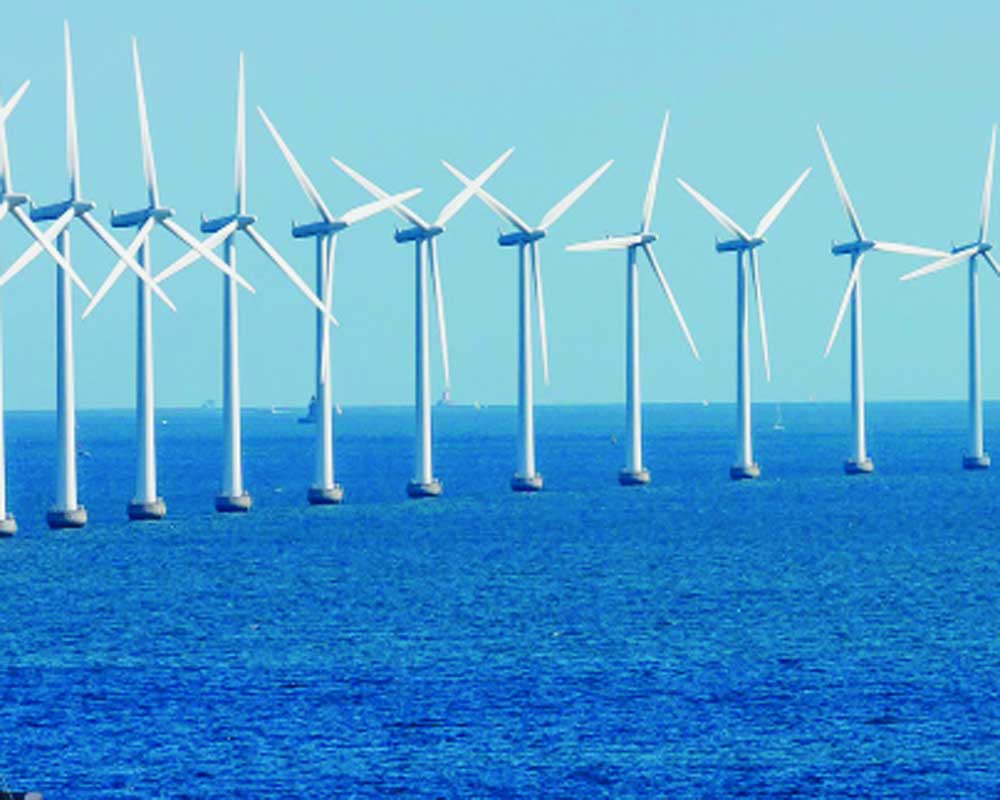At the end of 2018, the global offshore wind energy generated stood at 23 GW compared to 540 GW from onshore projects. With wind speed being a given asset, offshore production should have overtaken that of onshore operations
Offshore wind energy utilisation is a natural offshoot of the land-based wind power programme. However, despite the phenomenal progress in this decade, offshore wind energy is still a nascent sector with only two decades of serious research and development efforts.
At the end of 2018, the global offshore wind energy generated stood at 23 gigawatts (GW) compared to 540 GW from onshore projects. With wind speed potential being a given asset, offshore production should have overtaken the onshore creation statistics long ago but this is not the case.
Now, countries are removing obstacles in order to make offshore wind energy generation a major success. For instance, the last two years have seen installations to the tune of 4.5 GW each around the world, supported by technological advancements and supportive policies. The main contributors to this power capacity are the United Kingdom (UK), Germany, the Netherlands and China. These countries have also made policies attractive for investors in these projects.
For instance, Nordic countries like Denmark and Norway have removed penalties for project failure, emphasising on the importance of learning, over operation. As the offshore wind energy sector is based on expensive technology, pilot projects need support. This is generally in the form of investment subsidies. For instance, the UK provided large grants, to the tune of £10 million per plant, to the early offshore developers.
Given the fast-paced global developments in this sector, India, with its over 7,000 km-long coastline, has immense offshore wind power generation potential and has made appreciable efforts in this direction. However, we are not quite there yet, even though the green energy portfolio aims at harnessing its entirely unexploited potential. For India, this is the right time to focus on offshore projects. This is because there is a lull in onshore wind energy generation in the country, with only 3.3 GW added in the last two years. Also, the whole world is focussing on renewable offshore wind power at the moment, so India can’t be seen as lagging behind in this sector.
One of the main reasons for the slowdown in the onshore segment is the fact that repowering of old wind farms with higher capacity turbines does not offer the same scale of generation as offshore projects. Keeping this in mind and the upbeat global sentiment, the Government has set an ambitious target of developing five GW of offshore capacity by 2022 and a further 30 GW by 2030. The National Offshore Wind Policy, 2015 provides the basic framework for offshore project development in the country as it allows for setting up of offshore wind farms up to 200 nautical miles. However, in a rider that may not go down too well with many, developers can undertake project exploration and construction activities with just a 35-year lease from the Government, as per the Draft Offshore Wind Energy Lease Rules, 2019. Despite lofty targets aided by an ambitious Government policy, the ground realities are a bit different. The pace of development in many instances has been slow and the five GW target is out of reach. This is because project incubation itself takes six to seven years. While the Government is busy preparing the tenders, supply chain issues have been left unaddressed. Cost too is becoming a pressing issue.
The capital cost of offshore wind projects is roughly five-seven times higher than that of onshore projects. While turbines account for 60-80 per cent of the capital cost of an onshore project, they are only 30-50 per cent of the cost in case of an offshore project. Instead, the share of grid connection costs is higher at 15-30 per cent in case of offshore wind farms due to the requirement of laying sub-sea cables. The Government must remove these bottlenecks immediately if success has to be achieved in getting the targetted power generation. The policy must make arrangements for the reduction of costs through customised turbine designs made for low-wind conditions, low labour cost as well as tax waivers.
Moreover, at present the tax burden on the industry is estimated to be 30-31 per cent, which has led the developers to request the Government to waive off custom duties and impose only five per cent Goods and Services Tax (GST), in line with the concessions being provided to the oil and gas industry. This is crucial, considering that most of the projects are at present dependent on foreign technology. Unless these matters are resolved, the progress of offshore wind energy projects in India will be like taking two steps forward and three steps backward.
(The writer is an environmental journalist)


























